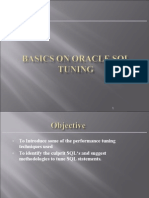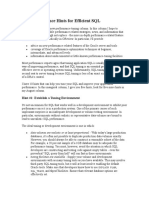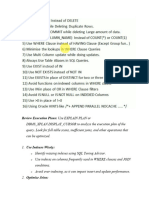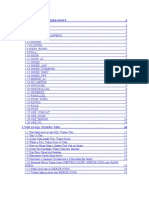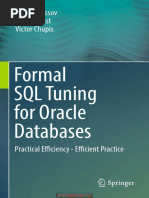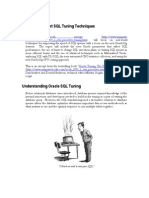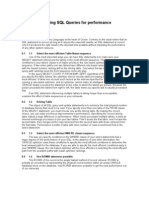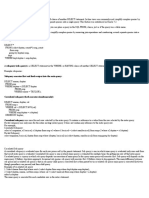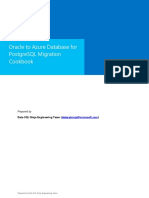0% found this document useful (0 votes)
18 views8 pagesOracle SQL Tuning You Probably Never Know
The document outlines a comprehensive guide on Oracle SQL tuning, emphasizing its significance in modern database management. It covers advanced techniques, including optimizer strategies, execution plans, partitioning, indexing, and parallel execution, along with practical examples and case studies. Additionally, it discusses the future of SQL tuning with AI and machine learning integration.
Uploaded by
quanwenzhaoCopyright
© © All Rights Reserved
We take content rights seriously. If you suspect this is your content, claim it here.
Available Formats
Download as DOCX, PDF, TXT or read online on Scribd
0% found this document useful (0 votes)
18 views8 pagesOracle SQL Tuning You Probably Never Know
The document outlines a comprehensive guide on Oracle SQL tuning, emphasizing its significance in modern database management. It covers advanced techniques, including optimizer strategies, execution plans, partitioning, indexing, and parallel execution, along with practical examples and case studies. Additionally, it discusses the future of SQL tuning with AI and machine learning integration.
Uploaded by
quanwenzhaoCopyright
© © All Rights Reserved
We take content rights seriously. If you suspect this is your content, claim it here.
Available Formats
Download as DOCX, PDF, TXT or read online on Scribd
/ 8


